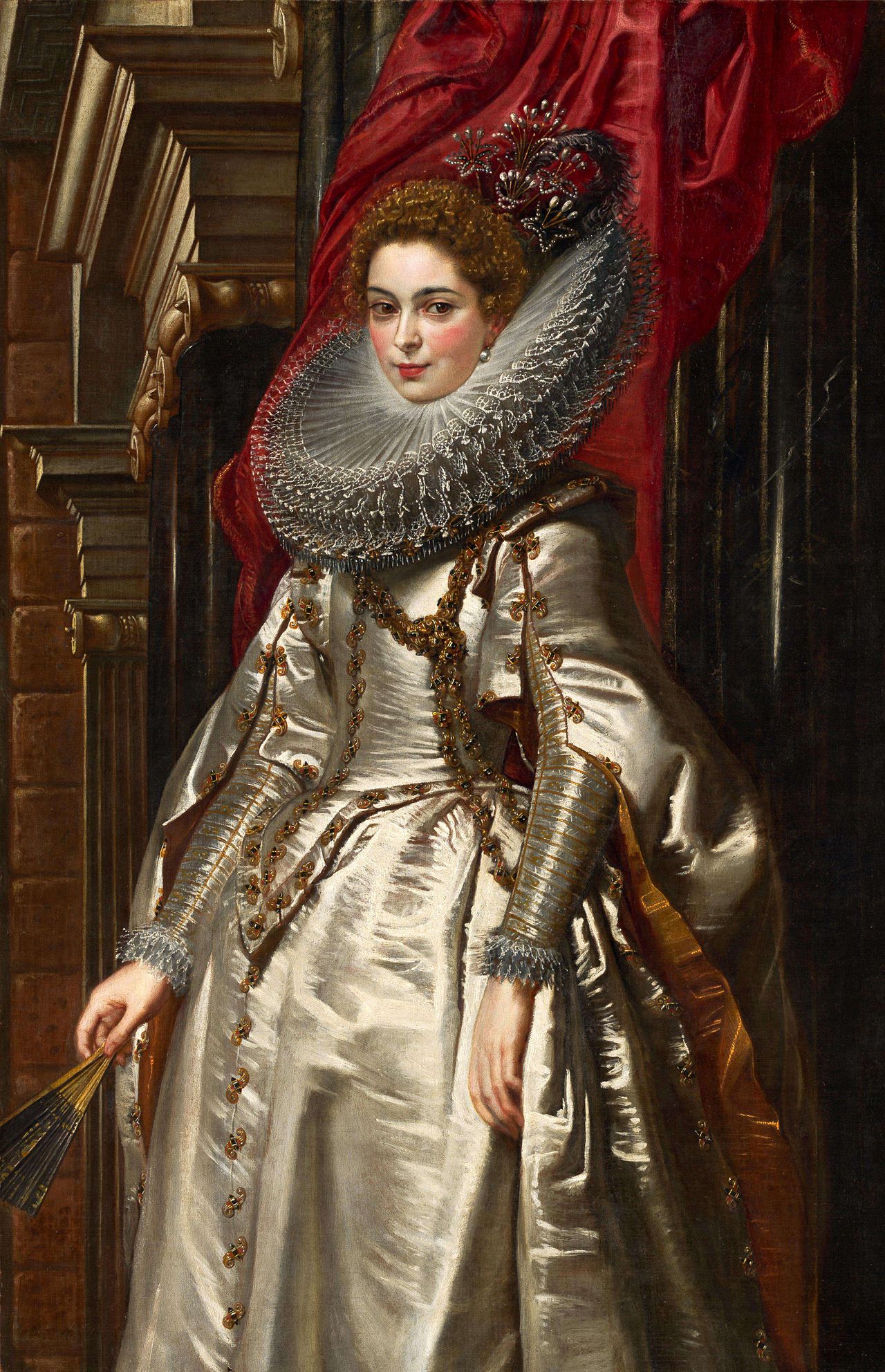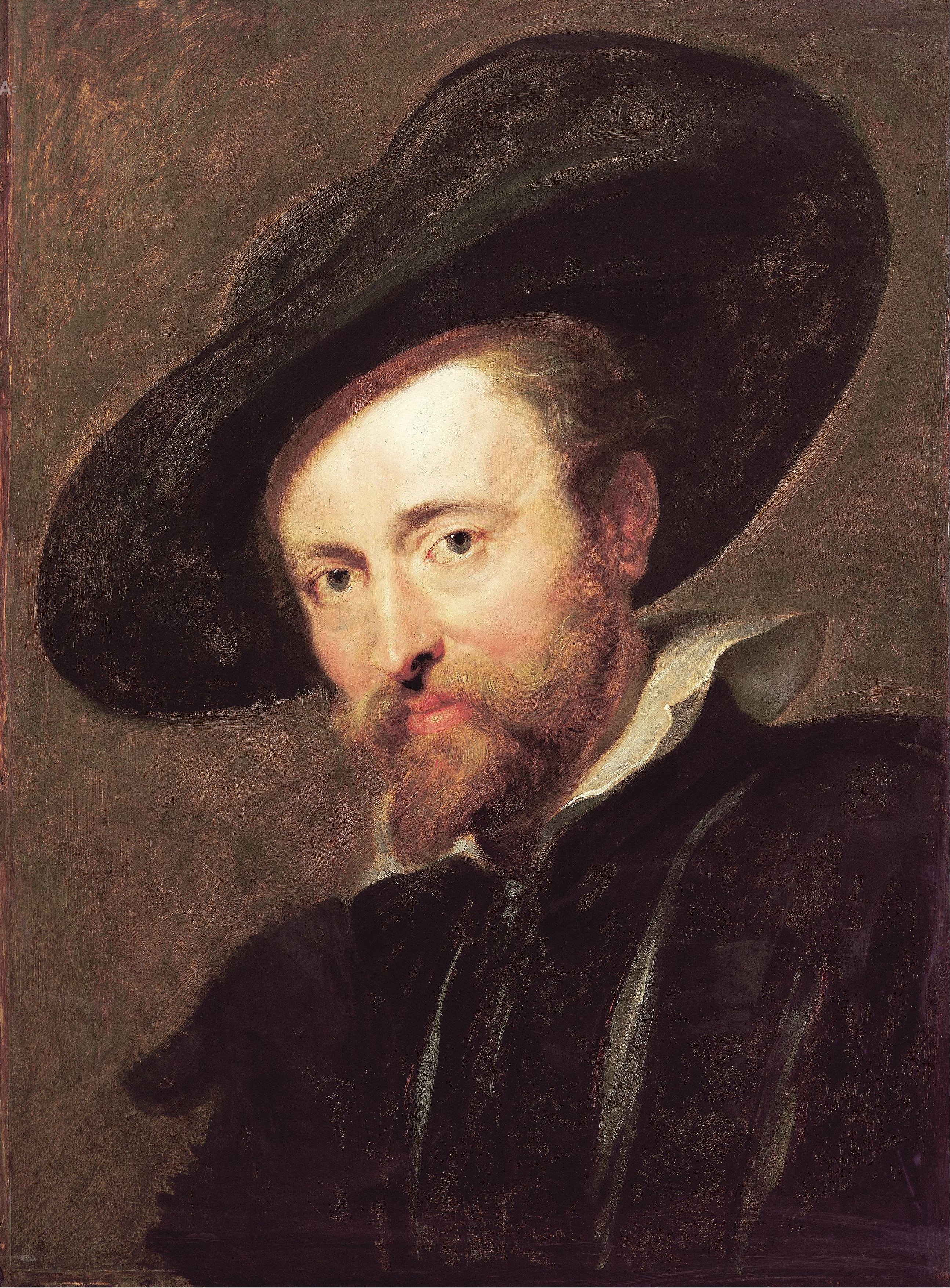Between 1600 and 1609, Peter Paul Rubens lived and studied in Italy, immersing himself in the country's rich cultural and artistic traditions. During a stay in Genoa in 1606, he painted the portrait of Marchesa Brigida Spinola-Doria, a 22-year-old newlywed from one of the city's most prominent noble families. The grand setting and the marchesa’s dignified appearance make clear her high social standing. Rubens skillfully used light, color, and the dynamic diagonals of the architecture to animate her stately presence. Light streaming into the scene highlights the dramatic folds of her luxurious satin dress, while a red drape adds an element of drama. Her gaze and the architectural perspective suggest the portrait was intended to be displayed high on a wall, towering above the viewer.
The marchesa's youthful face, framed by an enormous yet refined ruff, is enlivened by her large, expressive brown eyes and soft smile. Her elegance is further highlighted by her glowing satin gown, intricate lace, jewels, and the elaborate ornament adorning her carefully curled hair. Behind her, the gleaming marble and stone of a palazzo contribute to the sense of opulence. The Spinola family, major patrons of the arts in Genoa, derived their wealth from banking and commerce. It was common for such families to consolidate their fortunes through marriage, and Brigida Spinola wed her cousin Giacomo Massimiliano Doria in 1605. After his death in 1613, she remarried the widower Giovanni Vincenzo Imperiale, a Genoese senator with a passion for poetry and art. The marchesa’s composure may also reflect the unusually progressive legal rights and civic roles granted to women by Genoa’s constitution at the time. The future Pope Pius II, while still a young secretary to a cardinal, described Genoa as a “paradise for women.”
Beautiful, isn't she?
P.S. If you love art history as much as we do, don't miss our beautiful 2025 Desk and Wall calendars full of art history in the DailyArt Shop. :)
P.P.S. If you are not very familiar with the art of the artist, here are the 10 best paintings by Peter Paul Rubens. For more stories on the artist, see the articles below.


 Peter Paul Rubens
Peter Paul Rubens